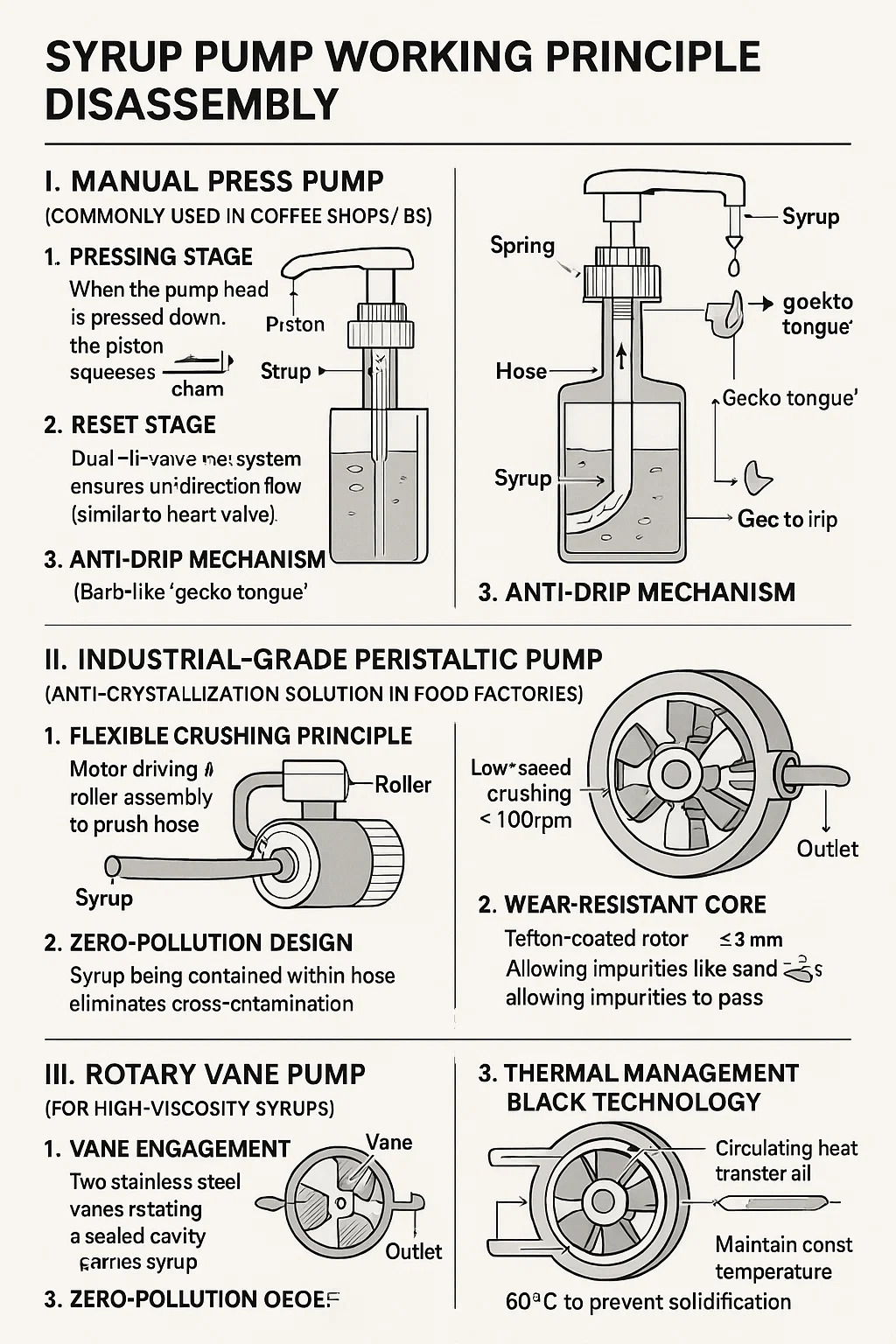Content
Syrup Pump Working Principle Disassembly
I. Manual Press Pump (Commonly Used in Coffee Shops/Bars)
1. Pressing Stage: When the pump head is pressed down, the piston squeezes the chamber → the bottom one-way valve closes → syrup is forced out from the outlet pipe.
Starbucks' "2P" sign means two presses (each pump ≈ 6 ounces of syrup).
2. Reset Stage: When the pump head is released, the spring lifts the piston → the top ball valve locks to prevent backflow → the bottom valve opens, creating negative pressure to draw in new syrup.
Key Design: The dual ball valve system ensures unidirectional flow (similar to heart valves).
3. Anti-Drip Mechanism: The barbed "gecko tongue" structure at the outlet → ensures zero residue when syrup flow is interrupted.
II. Industrial-Grade Peristaltic Pump (Anti-Crystallization Solution in Food Factories)
1. Flexible Crushing Principle: The motor drives the roller assembly to crush the hose → the crushing point moves forward, creating negative pressure to draw in syrup.
The hose springs back to its original shape → continuously drawing in new syrup.
2. Zero-Pollution Design: Syrup only contacts the food-grade hose (avoiding metal parts) → Eliminating cross-contamination.
The hose is resistant to fruit acid corrosion (e.g., reinforced with 316L stainless steel).
3. Crystallization Breaking Technique: Low-speed crushing (<100rpm) → Avoids frictional heating → Prevents syrup crystallization and hardening.
III. Rotary Vane Pump (For High-Viscosity Syrups)
1. Vane Engagement: Two stainless steel vanes rotate in opposite directions → The tooth gap forms a sealed cavity carrying the syrup.
The cavity moves to the outlet → The vanes engage, squeezing and expelling the syrup.
2. Wear-Resistant Core: Vane-to-Pump Housing Gap ≥3mm → Allows sand particles to pass through without jamming (cane syrup contains impurities).
Teflon-Coated Rotor → Reduces friction and sugar crystal formation.
3. Thermal Management Black Technology: Circulating heat transfer oil in the pump body jacket → Maintains a constant temperature of 60℃ to prevent solidification.



 English
English русский
русский 日本語
日本語 عربى
عربى Español
Español










